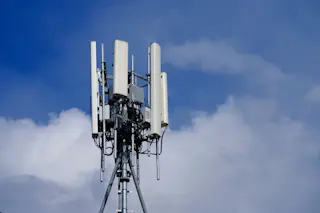Many regions of the developing world exist in a strange technological limbo. Places that are well served by advanced cellular phone networks may lack the modern medical facilities necessary to diagnose and treat serious illness. As a result, a remote village in, say, South Africa—a region hard hit by malaria, tuberculosis, and HIV/AIDS—might be able to contact top medical experts and yet have no way to apply their knowledge.
Researchers at the University of California at Berkeley are bridging the gap with the CellScope, a microscope that attaches to a camera-equipped cell phone and produces two kinds of imaging, called brightfield and fluorescence microscopy. The CellScope can snap magnified pictures of disease samples and transmit them to medical labs across the country or around the world. The goal is to use mobile communications networks as a cost-effective way for medical personnel to screen for hematologic and infectious diseases in areas ...















